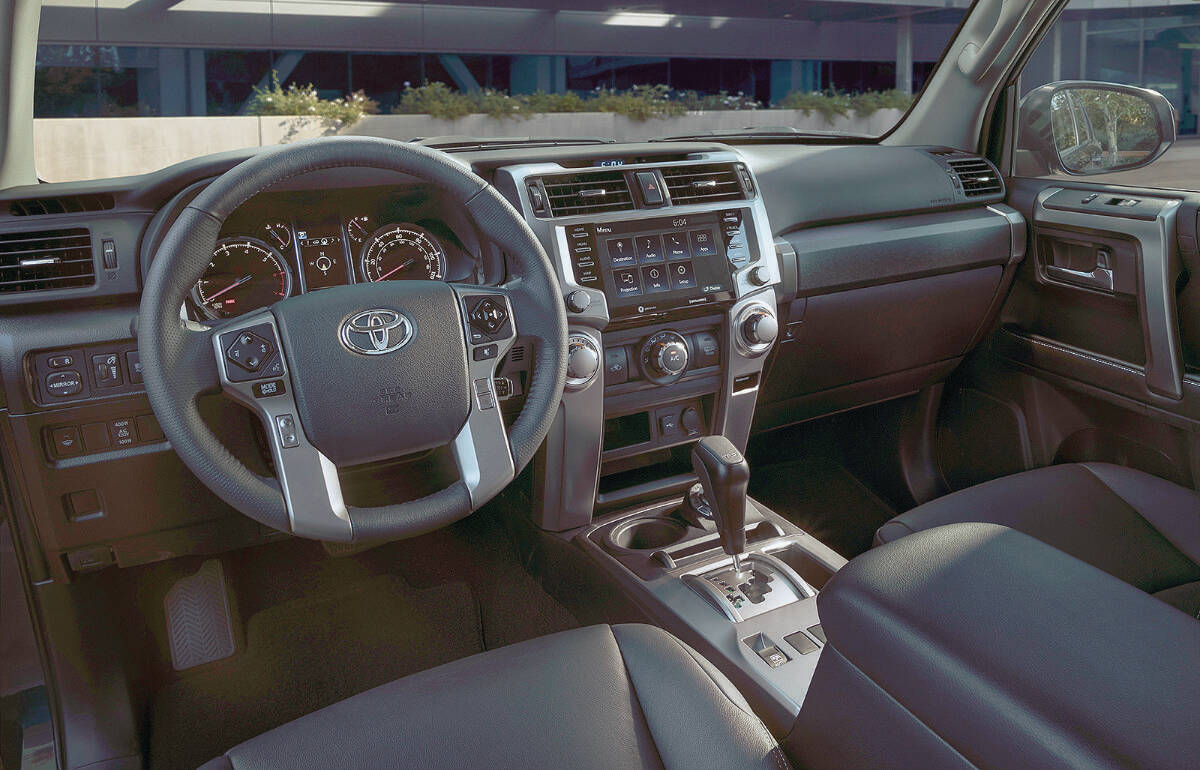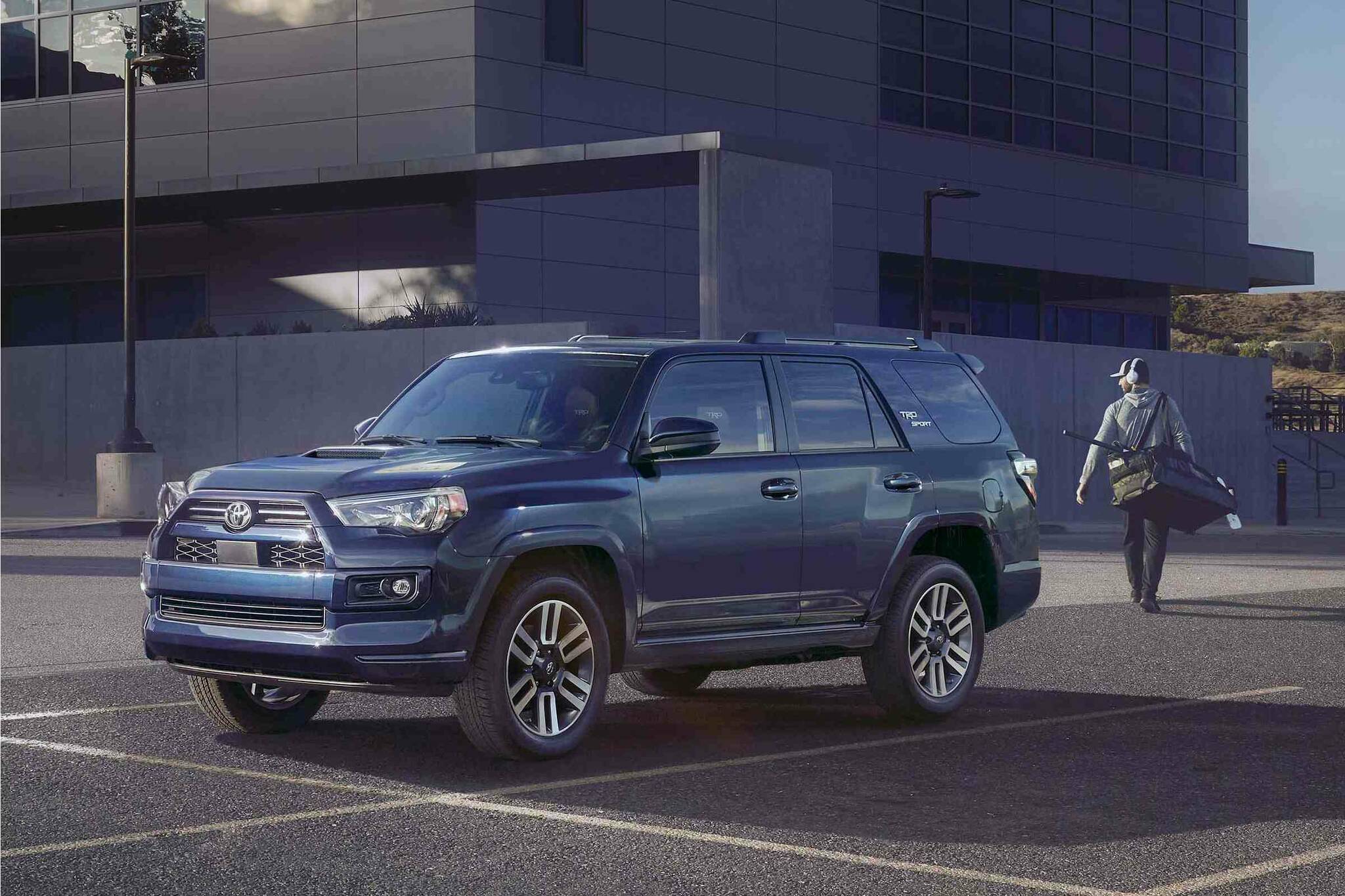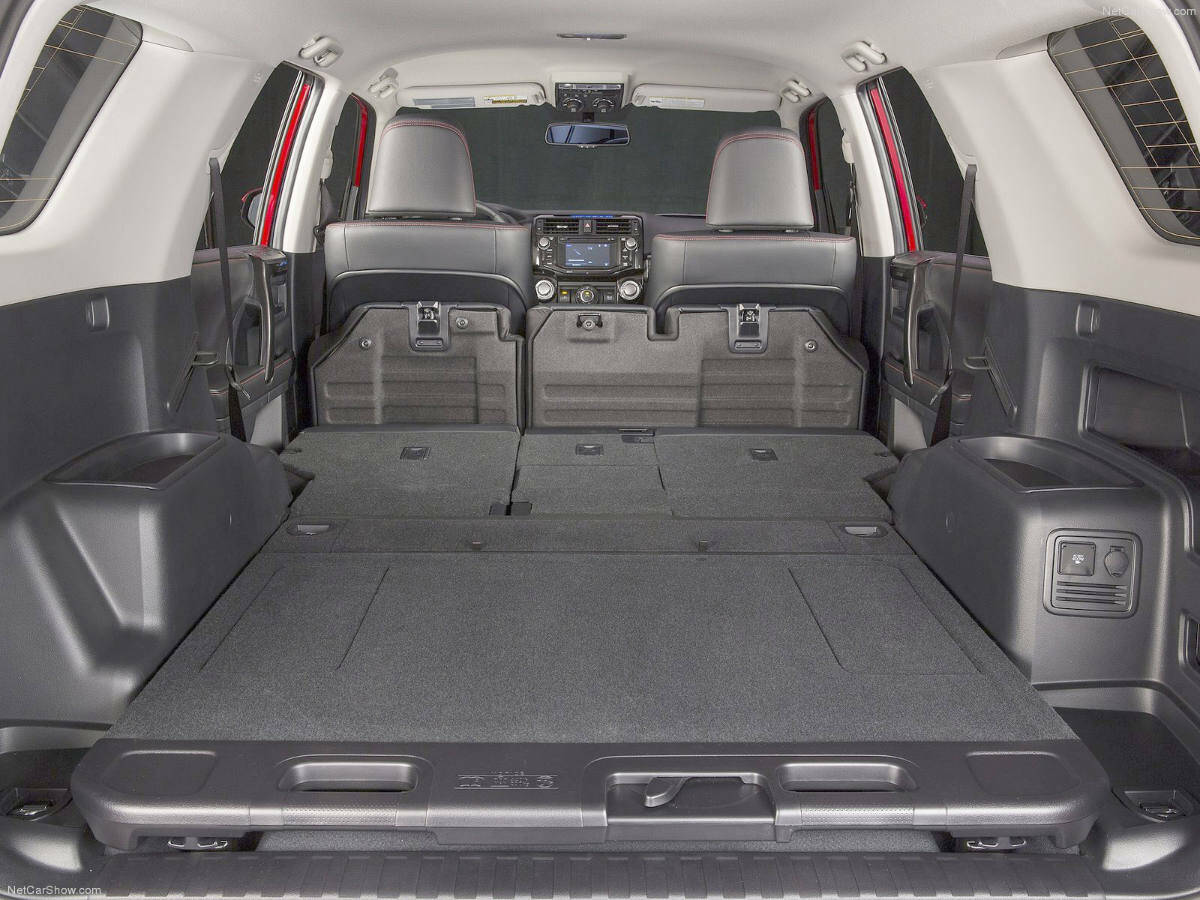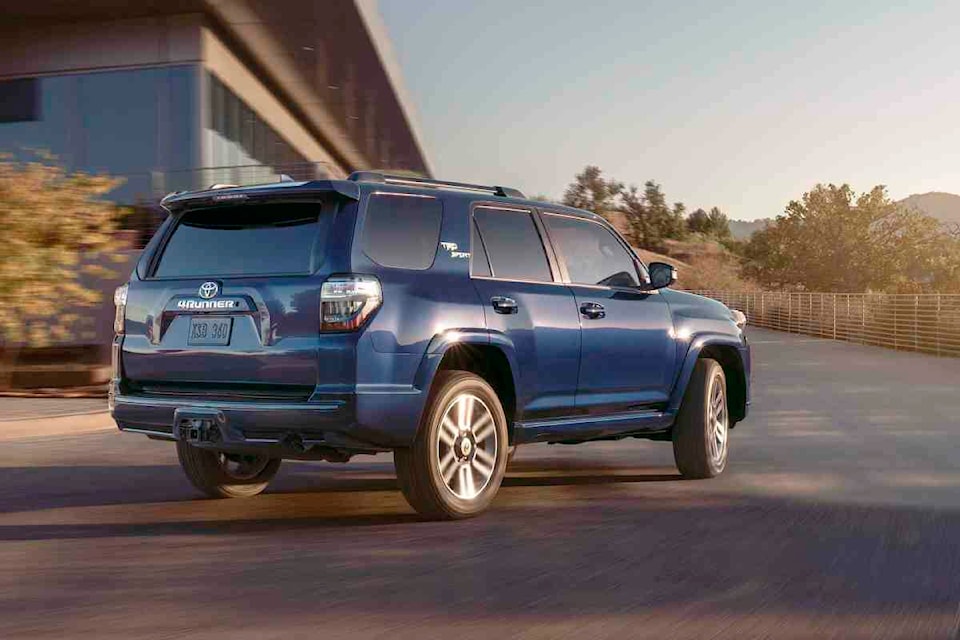With off-road capable vehicles currently in vogue, it might be easy to forget that Toyota’s 4Runner nameplate has been around for nearly four decades.
Over that time, it has developed a devoted following by those who appreciate the 4Runner’s capabilities and aren’t afraid to take it to places it was built to be driven.
The fifth- generation 4Runner has been around since the 2010 model year, which is an absolute eternity in the automotive world. Try going that long with the RAV4 and see what happens.
The minor tweaks and updates the 4Runner has received since that time have resulted in a tougher appearance, but haven’t in any way lessened this warrior-class vehicle’s core strengths.
The body panels still include unabashedly flared fenders and an in-your-face grille that add to the 4Runner’s rough-and-tumble character. There’s a separate ladder frame, which is how the competing Jeep Wrangler and Ford Bronco are built. The frame and basic suspension components are essentially the same as those used for the Tacoma pickup.

The one minor concession to modernity is the interior, which has a standard 8.0-inch touch-screen with Apple CarPlay and Android connectivity. It’s surrounded by an aging collection of knobs and dials for operating the audio and climate systems.
The seating arrangement for all models includes a reclining second-row bench plus a 50/50 split-fording third row. Optional is a slide-out cargo deck that can handle up to 200 kilograms. It can also serve as a work platform or a seat. The amount of available storage space with the rear seats in place or folded flat is outstanding. The 4Runner has a wide cargo opening.
A 4.0-litre V-6 makes 270 horsepower and 278 pound-feet of torque. It’s connected to a five-speed automatic transmission that directs power to all four wheels (part-time 4WD is standard). The combination has remained unaltered for the past dozen years — even the Jeep Wrangler offers an eight-speed automatic transmission — and could definitely stand an update.
The 4Runner’s throttle response is soft, no doubt impacted by a 2,120-kilogram base curb weight. On smooth pavement, the 4Runner drives well, but over rough surfaces, the ride can get quite harsh. This is just the way it is with body-on-frame off-road vehicles and is no different than for many competitors. It’s an acceptable trade-off for that capability.

Fuel consumption is definitely on the thirsty side: The rating is 14.8 l/100 km in the city, 12.5 on the highway and 13.8 combined.
Pricing for the base 4Runner Trail — one of six have-it-your-way trim levels — starts at $49,550, including destination charges. With it you get the essentials and a number of active-safety technologies such as lane-departure alert and emergency braking.
Also in the lineup are three levels of TRD (Toyota Racing Development) trims, beginning with the new-for-2022 TRD Sport. With it you get a hood scoop, colour-keyed trim, premium fabric seat covers and 20-inch wheels (17s are standard).
For more intense off-roading, there’s the TRD Off-Road. Its four-wheel-drive system has a two-speed transfer case with a crawl ratio for clambering over steep obstacles. The vehicle also controls speed heading down a steep incline.
For extreme conditions, there’s the TRD Pro, which provides the ultimate off-the-grid adventuring. It comes with a locking rear differential, front springs that give the 4Runner additional ground clearance, and Fox-brand shocks. A front skid plate and 17-inch all-terrain tires are part of the package, along with a massive-looking roof rack.
For more urban adventuring, the 4Runner Limited obliges with dual-zone climate control, perforated leather-trimmed seats, power moonroof and premium JBL-brand sound system. It also comes with its own full-time AWD system.
At well more than a decade old in its current configuration, the Toyota 4Runner is showing its age and is long overdue for a major refit. But for the many brand loyalists, this rugged rig’s blend of spaciousness and off-road competency are the key elements that keep them coming back for more.

What you should know: 2022 Toyota 4Runner
Type: Four-wheel-drive utility vehicle
Engine (h.p.): 4.0-litre V-6 (270)
Transmission: Five-speed automatic
Market position: The 4Runner nameplate has achieved iconic status since it first arrived here nearly four decades ago. The fact that the current model has maintained its look and mechanicals for more than a decade hasn’t seemed to diminish its popularity one bit.
Points: Overall styling is as rugged as ever and fits nicely with current trends. • The standard V-6’s output is somewhat modest by today’s standards. • The interior is, well, old. • It’s roomy, though, and caters to passenger comfort. • An abundance of trim levels means you can pretty much select exactly the version that suits your needs and budget. • Fun is fun, but it’s time for a new model.
Active safety: Blind-spot warning with cross-traffic backup alert (opt.); active cruise control (std.); front emergency braking (std.); inattentive-driver alert (n.a.); lane-departure warning (std.); pedestrian detection (std.)
L/100 km (city/hwy): 14.8/12.5
Base price (incl. destination): $49,550
BY COMPARISON
Ford Bronco four-door
- Base price: $45,300
- Off-roader offers a number of turbo power picks, from 275 to 330 h.p.
Jeep Wrangler four-door
- Base price: $47,800
- Iconic 4x4 can be had with I-4, V-6 or V-8 engines. Plug-in hybrid opt.
Honda Passport AWD
- Base price: $47,500
- Not as hard-core as others, but still reasonably capable off the trail.
– written by Malcom Gunn, Managing Partner at Wheelbase Media
If you’re interested in new or used vehicles, be sure to visit to find your dream car today! Like us on and follow us on



